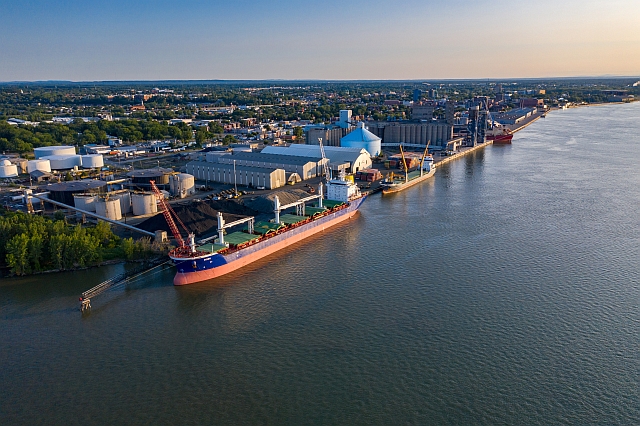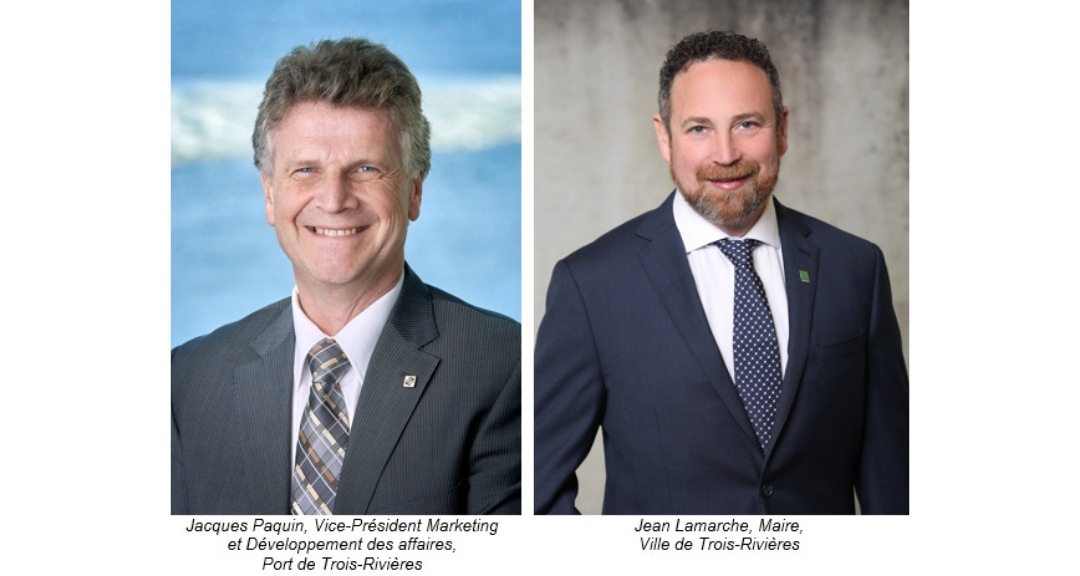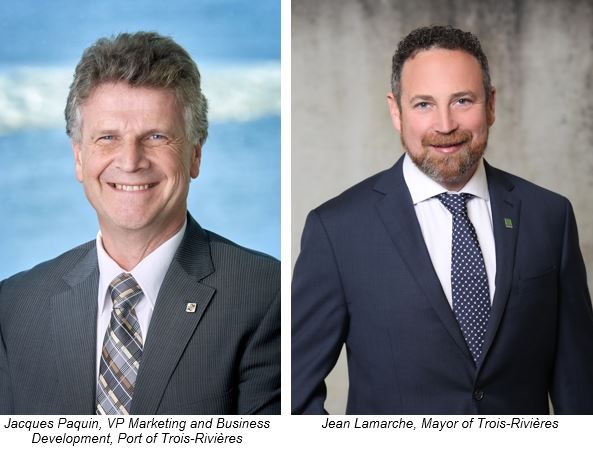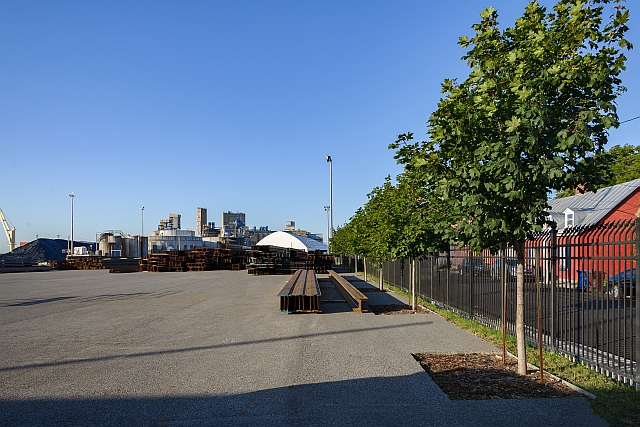Located in the heart of the city itself, the Port of Trois-Rivières faces a daily challenge to balance its activities with the life of residents living next to the Port. But the Port sees this co-existence as a great opportunity to work hand in hand with the City, building a feeling of pride and belonging to a dynamic, attractive city.
The Port of Trois-Rivières is an active member of AIVP since 2016
The City of Trois-Rivières is an active member of AIVP since 2020
AIVP – The Port of Trois-Rivières is located in the heart of the city, something that is often seen as a hindrance for other port cities. But you see it as a source of opportunities that are there to be exploited. That is what you explained in October 2018, at the unveiling of your “On Course For 2030” development plan for the period up to 2030. How exactly do you go about taking advantage of those opportunities, and what are the obstacles that need to be overcome in order to be an “innovative urban port”?
Jacques Paquin, VP Marketing and Business Development, Port of Trois-Rivières – You are right, the Port of Trois-Rivières is literally right next-door to residential areas. So the crucial day-to-day challenge for us is to reconcile the industrial activities with the neighbouring urban environment. It’s a challenge we tackle with our partners in the cargo handling and stevedoring industry. Together, we strive to make decisions and act as if we ourselves lived next-door to the Port.
Generally speaking, citizens want the port to create jobs, generate economic benefits and contribute to social development, all while having the smallest possible impact on the environment and creating the fewest possible disadvantages for the neighbourhood. So it’s about finding the right balance that allows us to promote the port’s activities while maintaining peace and quiet for residents living nearby.
 An urban port © Port of Trois-Rivières
An urban port © Port of Trois-Rivières
To do that, we have to ensure that operational best practices are followed, and always be at the cutting edge of developments in this area, in addition to devising initiatives that significantly contribute to the living environment of local residents.
For example, the Port of Trois-Rivières is careful to concentrate its bulk handling activities in areas located furthest from residential areas, restrict operating times for sectors adjacent to the city centre, plant vegetation to act as a buffer, and even create green spaces for residents and visitors to use.
The “On Course For 2030” development plan, which will guide our actions over the coming years, is designed precisely for that priority, to be an “innovative urban port”. Two major projects in particular are part of that approach, namely Terminal 1 and the waterfront development. The first is an innovation-based response to constantly rising demand from users, whereas the second is intended to create a living environment that is attractive and appealing for both local residents and visitors, whilst also being economically viable.
AIVP – One of the key planks of the “On Course For 2030” project is the development of the riparian zone. Can you tell us briefly what the main aims are?
Jacques Paquin, VP Marketing and Business Development, Port of Trois-Rivières – For some years now, the Port has been committed to promoting better access to the river for citizens and visitors. As an example, a riverside car park has been turned into a park, where thousands of people a year go for a bite to eat, a walk, or just to admire the view. Another piece of Port land was handed over to the City with the aim of creating a collaborative public space with a play area, urban agriculture facilities, picnic areas and artworks.
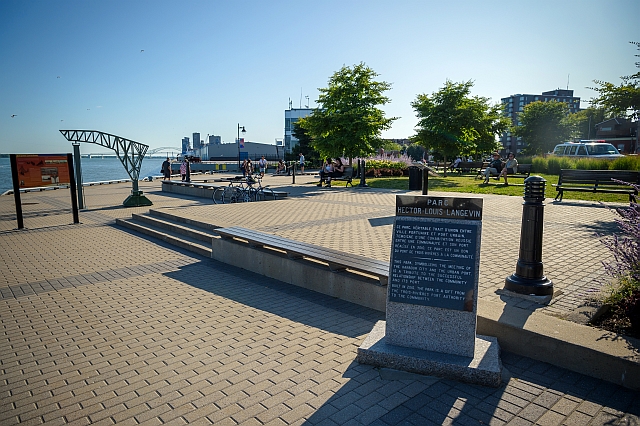
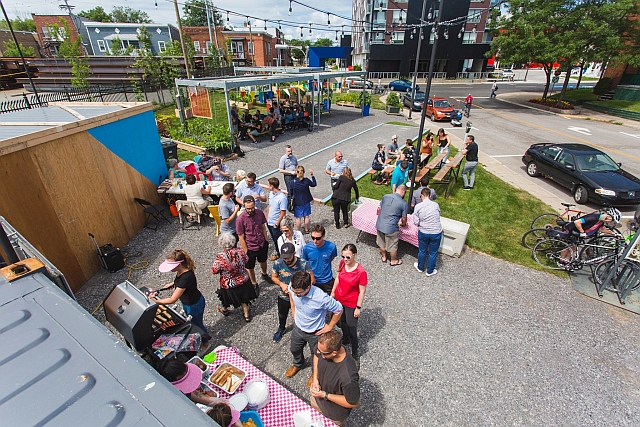
A little further to the east of our installation is a terminal with a hangar. Although they are still used for cargo handling activities, these installations on the edge of the City of Trois-Rivières port park have tremendous potential and could be converted for leisure and tourism, residential and commercial uses. The whole community could benefit from this harmonisation and the integration of activities on the waterfront into the vibrant city centre and historic quarter; the very heart of the Trois-Rivières conurbation.
The development we have in mind will take into account the City’s built heritage and urban planning. Projects that go ahead will have to respect the principles of sustainable development, be innovative, reflect the urban aspect of the port, and be economically viable.
In addition, all developments will need to satisfy seven conditions:
1. Be a port for all the citizens of Trois-Rivières;
2. Be part of a connected riparian promenade that brings people together;
3. Showcase the city centre from the river, and the river from the city centre;
4. Offer a range of different activities and experiences;
5. Be a high-profile, accessible destination;
6. Act as a catalyst for real estate investments that promote the city’s economic, environmental and social development;
7. Form a distinctive signature that reinforces the strong identity of the local environment.
Currently, under its letters patent, the Port does not have the power to develop these kinds of activities on its properties. However, it is generally agreed that the project to develop and improve the waterfront area needs to go ahead. The Port, the City and Transports Canada recently agreed to work together to find the best possible solution for this development, which is vital for the whole region.
AIVP – For this waterfront development project, how exactly are you working together with the City of Trois-Rivières in practice, particularly when it comes to resolving differences of opinion? Will the local population be involved in the process?
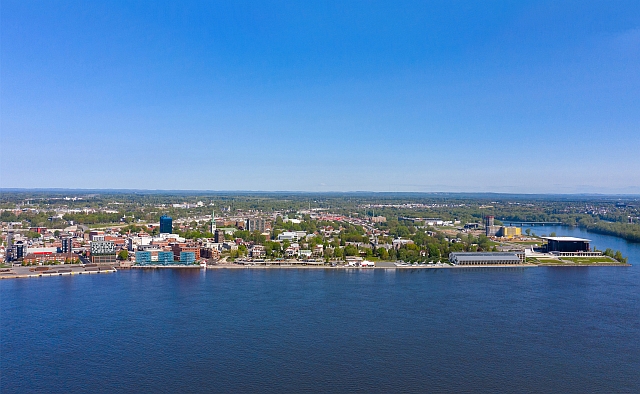
Jacques Paquin, Vice-President, Port of Trois-Rivières – The close collaboration established between the City and Port over the last decade has enabled us to modernise the port installations and integrate them more harmoniously into the urban environment, in addition to mitigating their environmental impact. Now, the two organisations are keen to push on with their collaboration and improve the waterfront.
Jean Lamarche, Mayor of Trois-Rivières – In collaboration with the City, the Port of Trois-Rivières has developed an inspiring and, more importantly, a realistic vision for creating a living environment where residential, leisure, tourism and commercial activities can exist side-by-side, while ensuring access to the river for all. At the City of Trois-Rivières, we look forward to working with the Port and the environment on this major project. Because of course, when the roadmap for this project is identified, public consultations will be organised to enable the population to play its part.
Jacques Paquin, Vice-President, Port of Trois-Rivières – Actually, the Port is aiming no less than to make the waterfront the new focus of Trois-Rivières’ identity. The site must act as a showcase for the city centre and a window on the river. Seen from the river, the development will be in harmony with the existing urban framework, but will also give the waterfront area a special, distinctive signature. Seen from the city centre, the presence of the water and the Port are the big assets and will form the cornerstone of efforts to bring out the city’s port character. To foster a sense of belonging and unique pride, the sector’s identity will draw on the core elements, namely port activities of the past and present.
Jean Lamarche, Mayor of Trois-Rivières – The waterfront has the potential to play a bigger role in the economic vitality of the city. This project is fully in line with our ambition to grow the population of the city centre and the number of workers, which will help to support commercial and leisure activities all year round. We need environments that are both dynamic and peaceful, and suitable for the needs of all. The key thing is to attract people for a variety of reasons, at different times. That will ensure the sector is full of life all year round, day and night.
We want the site to be easily accessible. That means attracting people to the waterfront, first and foremost by using public transport or active means like cycling or walking, as these are healthy, quiet, and clean modes of transport.
Jacques Paquin, Vice-President, Port of Trois-Rivières – Finally, this development will include the principles of sustainable development, by ensuring a balance between economic, environmental, and social objectives. Improving this founding site, and the buildings and spaces developed there, will consolidate its public nature. The Port must continue to be a crucial vector for development, and in that sense it accepts that some of its installations will need to be used differently. In short, we are aiming to make the waterfront a real place for reconnecting, with a distinctively Trois-Rivières identity, an everyday destination that will contribute to the happiness of citizens, workers and visitors.
AIVP – This waterfront project could clash with existing port activities. What solutions are being considered or have already been adopted?
Jacques Paquin, VP Marketing and Business Development, Port of Trois-Rivières – Actually, we see that more as an opportunity to create a mixed-use site. Trois-Rivières’ downtown is one of only a handful in North America to have that proximity with large ships. Maritime shipping represents an attractive economic shop window, that reflects the vibrancy of Trois-Rivières’ industry and tourism. It will be interesting to identify some strong viewpoints that will let people observe the port’s activities. The site will become a point of interconnection, where the city centre and the river meet.
